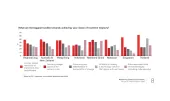What you need to know about the use of yuan for trade finance
By Nathan Chow Hung Lai (周洪禮)The People’s Bank of China (PBoC) announced its intention to widen the official ±1% trading band on 19 February. Since then, it steadily fixed the official USD/CNY parity rate higher to 6.1475 on 21 March, a level not seen since early November.
Effectively, this engineered a convergence in the onshore USD/CNY and the offshore USD/CNH with the daily fixing. In turn, this created an appropriate setting for the central bank to double the trading band to ±2% around parity on 15 March.
The policy maneuver is, however, likely to reduce the yuan’s usage in trade finance activities in the near term. Policymakers are unlikely to be too alarmed.
Apart from weeding out unproductive speculative activities, this would set the stage for a flexible exchange rate based more on market demand and supply.
Understanding CNH-CNY arbitrage opportunities
The yuan trade settlement scheme was launched in 2009 to allow mainland companies to settle cross-border trade in the yuan. The scheme, however, encouraged many enterprises, especially large ones with subsidiaries in Hong Kong, to channel funds across the border by over-invoicing their imports to arbitrage the CNH–CNY spread.
After the launch of the yuan trade settlement scheme, mainland importers were no longer restricted to buying dollars in the onshore CNY market, and could sell yuan for dollars in the offshore CNH market. Due to steady yuan appreciation expectations, the freely-traded offshore CNH is usually more expensive in US dollar terms compared to the more controlled onshore CNY.
Theoretically, the arbitrage should have eliminated the CNH–CNY spread.
The CNH-CNY spread continued to exist because of yuan appreciation expectations. Unlike the onshore USD/CNY, the downside in the offshore USD/CNH was not limited by the official trading band and remained a favored vehicle for carry trades.
As long as this persisted, the CNH–CNY spread would continue to create arbitrage opportunities for mainland importers.
There appears to be a correlation between such arbitrage activities and the CNH-CNY spread. In Chart 1, trade finance activities settled in yuan dropped sharply in 2Q13, when CNH–CNY spread shrank from depreciation fears amid hard-landing worries in China.
These activities subsequently picked up again in 4Q13 on the back of renewed yuan appreciation expectations that widened the CNH-CNY spread. According to SWIFT, the yuan proceeded to surpass the euro to become the world’s second most-used trading currency in trade finance during this period.

Many believe that China’s trade finance activities were inflated by over-invoicing of trade transactions and arbitrage flows. Despite being the second most used currency for trade finance globally as at Oct 2013, the yuan only ranked 12th as a world payments currency (Charts 2 and 3).


The benefits of a more volatile forex in growing yuan trade finance activities
Looking ahead, the recent yuan weakness and the narrower CNH-CNY spreads are only likely to slow the yuan’s trade finance activities in the near term. On a positive note, we foresee rising yuan volatility to prompt genuine transactions in the longer term (Chart 4).

Beijing took a major step towards making the yuan a freer currency on 15 March by doubling its trading limits. Corporates have proceeded to take on various hedging strategies to mitigate the accompanying increase in exchange rate volatility.
More small- and medium-sized enterprises are expected to invoice in yuan because they lack the experience and/or expertise to hedge foreign exchange risks effectively.
By adopting the yuan, foreign companies can also enjoy the price discounts offered by some mainland companies. The mainland authority estimated earlier that overseas importers paying in yuan could save 2–3% on their invoices.
Looking past the recent volatility in the yuan markets, cost advantages and foreign exchange risk mitigation would help the long term prospects to increase the use of yuan for trade finance purposes.




















 Advertise
Advertise







